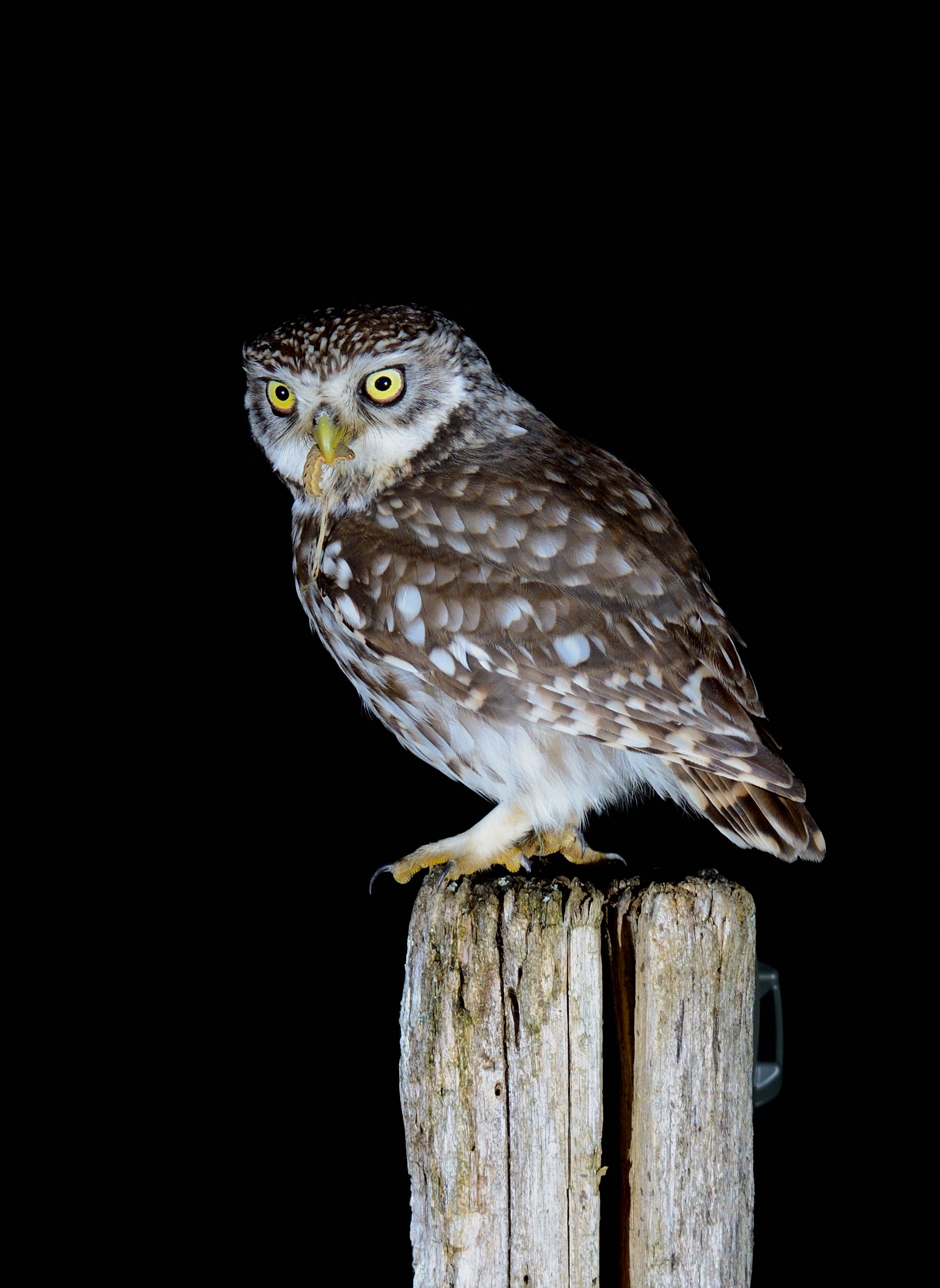Photographing Owls at night
Whilst some Owls will show themselves during daylight, it is after dark, that they really come to life. - So, how do we photograph these beautiful nocturnal creatures when it's really dark outside?
 |
| A beautiful 'Dark Phase' Barn Owl |
Some years ago, I set myself the challenge of 'remote' wildlife photography and built my first 'DSLR' camera trap. Over the years, I have developed the system and now have three systems, which are regularly left out at locations, where I hope that they might capture a wide range of creatures. These have included Badgers, Foxes, Wild Boar, Deer and a range of other animals, including the elusive Genet.
These systems can be used during daylight, or darkness and the 'trigger systems' that I use are all based on wireless sensors, that can detect movement over a wide range and can be controlled for sensitivity, light and even the amount of shots taken. In simple terms, the main trigger detects movement and wirelessly fires the shutter on the camera. During darkness, a secondary trigger, also simultaneously fires the flashes! Specific camera and flash settings can be found at the end of this blog!
The camera and flashes are all mounted in waterproof and shock-proof housings and this is what the system looks like.
 |
| The camera with the triggers and power pack are installed in this waterproof housing and pre-focused on a target area. |
a.JPG) |
| The system in-situ next to this tree stump, that I positioned in the middle of a field, where I knew that Owls were using for hunting. |
 |
| Little Owl with Hawk Moth Caterpillar |
I am lucky, to have a family of Little Owls that often visit my garden and this gave me the opprtunity to test and develop my systems, whilst also getting some great nocturnal shots of them.
 |
| Outgoing..... |
 |
| Hunting mode.... |
Sadly, I don't have Barn Owls, or Tawny Owls around my home, so the search was on for a location. This was found around 10kms away, but the Owls were using an area where I could not gain access. What I needed to do, was set up a new 'perch' that I could access and that the birds would hopefully investigate and use. This was in the centre of a nearby field, where I dug a hole deep enough to support a 3 meter tall section of a fallen tree stump. Most raptors are inquisitive birds and will usually investigate a new post, especially, if it is in the middle of a hunting zone!
Fortunately, I was in luck and I have been using this location for the past 12 mths. In fact, I currently have a system there, which will be left for four weeks and hopefully provide some more images when I retrieve the system.
Here are some from earlier in the year starting with the Tawny Owl and followed by some Barn Owl images.
Tawny Owl
Barn Owl
Although these images are all taken with 'remote' camera systems, there is a lot of work involved with subject research, setting up the system and finding suitable ways to mount the various components. Some are tripod mounted, whilst others are mounted on the ground, up in trees, or even in the middle of streams and rivers!
One thing that remains fairly constant, are the settings used on the camera, triggers and flashes, which are all designed to obtain the image, whilst not spooking the target creature. The fact that all of my locations are still frequently visited by those target species, confirms that the targets are not unduly bothered by the equipment, or the flashes.
It would not have been possible to photograph any of these Owls at night without this equipment!
For anyone wanting to try building their own systems, I use the following equipment:
Camera Bodies: Nikon D7000
Camera Lens: Standard Kit lens, 18-55mm
Flashes: Nikon SB-28's, which can be programmed for reduced output level and have a standy mode, which allows for them to be left 'in the field' for up to one month between charges!
Wireless Triggers: 'Camtraptions' Triggers for 'Movement', 'Shutter Release' and 'Flash' operation.
Waterproof Housings for camera: Modified 'peli-case'.
Waterproof housings for flash units: Modified Household drainage pipe!
Mounting Hardware: Various Tripods, Ground Mounts (modified upturned frying pans!), Tree Mounts, Ratchet Straps etc.
Camera Settings:
Shutter Speed for Nocturnal: 1/160
Focus: Manual focus on target area.
F-Stop: f9
ISO: ISO400
Shooting Mode: set to 'Continuous High Speed', which will give a burst of 5-6 images on each 'trigger'.
Flash Settings:
Output Level: 1/8 (we don't want to use high output flash when working with wildlife).
Zoom: Same as lens zoom setting, or same as fixed length if not a zoom lens.
ISO: ISO-400
Mode: Manual, Repeating Flash
Programme for 'standby mode'.
Programme for 'No AF illumination'.











Interesting and fabulous photos. I do love the Barn Owl though I think the Little Owl remains my favourite. I need you to look at my camera it is not working, I must have changed a setting and I have no idea what!
ReplyDeleteA bientot, Diane